
Assessing Mobile Nuclear Reactor Usage in the Pacific
By Capt. Maria Hurtado, USMC, Eric Mbonimpa, Ph.D., P.E., Jeremy Slagley, Ph.D., M.SAME, Julie Skipper, Ph.D., and Willie Harper Jr., Ph.D.
A research team at the Air Force Institute of Technology carried out a lifecycle assessment of the environmental impacts, operational viability, and logistical considerations of mobile nuclear reactors in the Indo-Pacific.
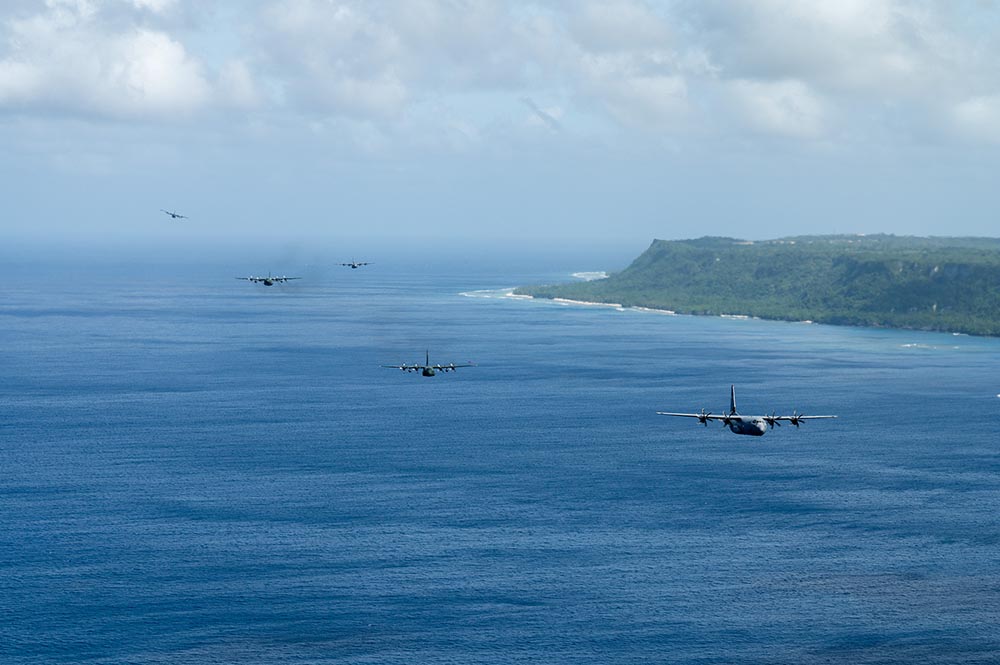
Energy dependency poses significant vulnerabilities for the military—impacting operations with logistical challenges, costs, and environmental concerns. Historical lessons underscore the need for mitigating energy dependence, as highlighted by a 2016 report from the Defense Science Board and the 2022 National Defense Strategy focusing on Indo-Pacific threats. Efforts by the Department of Defense to reduce greenhouse gas emissions further emphasize the importance of sustainable energy solutions.
Alternative fuels have the potential to minimize environmental impacts, enhance operational flexibility, and reduce logistical risks, particularly in remote Indo-Pacific locations. A promising alternative is mobile nuclear reactors, due to their low carbon emissions and compact footprint, exemplified by projects like the Portable Nuclear Power Plant. These reactors offer transportability, which is crucial for military deployments.
Researchers with the Air Force Institute of Technology (AFIT) recently carried out a study to assess the lifecycle environmental impacts and feasibility of mobile nuclear reactors in the Indo-Pacific. Comparative analyses of hydrogen, wind, solar, JP-8, and ammonia were conducted to determine the most sustainable and operationally viable energy source for military applications.
Addressing Impacts
Mobile nuclear reactors present compelling advantages. Assessing their viability and deployment, however, requires careful comparison with other energy sources. While lifecycle assessments do reveal environmental impacts as a result of nuclear operations (from mining activities to waste management), other energy sources also face similar challenges. Fossil fuels generate pollution throughout their lifecycle. Renewable technologies require environmentally costly materials like lithium and cobalt for batteries.
Promising Pathway. Though nuclear waste draws criticism for negative consequences to health and safety, today, deep geological repositories and reprocessing now offer viable disposal solutions for the spent fuel. Common alternative energy sources such as wind, solar, and hydrogen struggle to match the energy density, performance, and infrastructure compatibility of conventional fuels like JP-8.
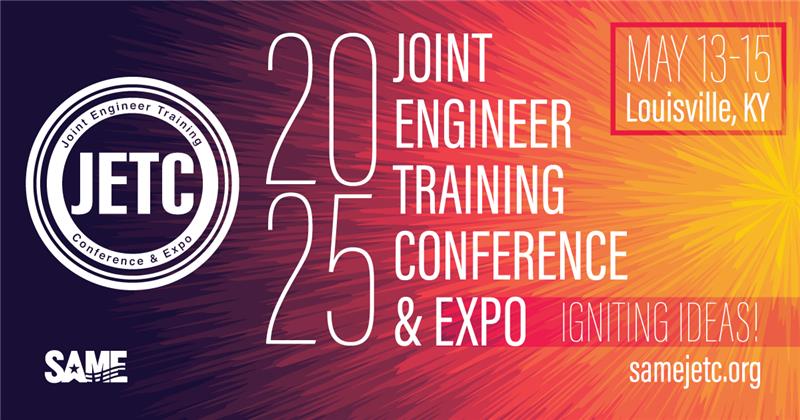
A comprehensive analysis of these trade-offs suggests that mobile nuclear reactors could serve as a cleaner energy alternative, offering superior energy density with minimal fuel replenishment over years of operation. In addition, their compact footprint and reduced logistical demands could eliminate or reduce the constant fuel transport operations in hostile environments required by traditional JP-8 systems. As an historical reference, during a four-year period at the height of the War on Terror (2003-2007), at least 3,000 U.S. Army personnel and contractors were killed or wounded by attacks on fuel and water resupply convoys according to military record tracking.
To address these challenges comprehensively, life-cycle assessments conducted using SimaPro and TRACI 2.1 tools can provide crucial insights. SimaPro enables detailed assessments of energy and material inputs across a product’s life-cycle, highlighting environmental footprints and guiding sustainable decision-making. Meanwhile, TRACI 2.1 offers a standardized methodology to quantify environmental stressors from different fuel types, aiding in comparative analyses and policy formulation.

Comparing Sources. The lifecycle assessment conducted by AFIT used SimaPro software to compare environmental footprints across energy sources, following ISO 14040 and 14044 standards. The analysis consists of four phases: goal definition, inventory analysis, impact assessment, and interpretation. The research evaluated nuclear energy alongside JP-8, ammonia, and hydrogen (from wind and solar sources)—standardizing comparisons using a 100-kW/hour metric. Data sources included technical reports, literature, and the EcoInvent V3 database, with additional nuclear energy data validated by the World Nuclear Association.
The impact assessment utilized TRACI 2.1 methodology to evaluate environmental stressors, from ozone depletion to human health effects. Network flow diagrams revealed significant environmental impacts during transportation stages for JP-8, primarily due to shipping fuels and diesel combustion. Notably, hydrogen from solar and wind sources showed unexpected impacts in production and transportation phases, highlighting limitations in the EcoInvent 3 database. TRACI’s assessment revealed JP-8 as the most environmentally impactful across categories, to include global warming, smog formation, acidification, and fossil fuel depletion. Conversely, hydrogen from wind power consistently demonstrated lower impacts, yet showed elevated carcinogenic impacts possibly linked to manufacturing and operational materials. Nuclear fuel outperformed JP-8 in several categories. This suggests potential for military applications despite safety concerns and waste management challenges.
The AFIT study identified hydrogen, generated using wind power source, as the least environmentally impactful option. It confirmed the significant environmental burden of JP-8. Future research should refine data inputs for emerging technologies like mobile nuclear reactors and incorporate uncertainty analyses to support sustainable energy decisions within the Indo-Pacific.
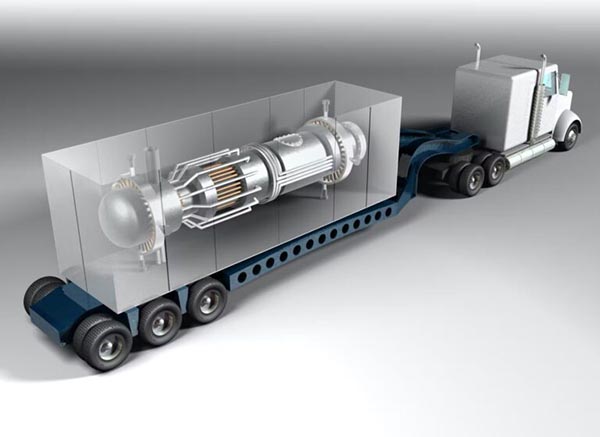
Historical Context
Mobile nuclear reactors date back to the 1960s with the Army Nuclear Power Program. Initially tasked to develop nuclear power plants for remote installations, the Army culminated its efforts with the construction of six mobile reactors. Among these, PM-2A stands out as the first operational portable nuclear reactor. Installed at Camp Century, Greenland, PM-2A provided essential energy and heating for three years (potentially saving 1-mil/gal of diesel fuel or more).
Despite early successes, the projects were not without safety and environmental hazards. The radioactive liquid generated by PM-2A remains buried under ice. There are concerns that climate change could melt the ice and lead to exposure to the radioactive material. A 2021 study by scientists with the Geologic Survey of Denmark and Greenland reported that contamination likely would remain immobile through 2100.
Another system, PM-3A, a pressurized water reactor designed for a research outpost in Antarctica, experienced a cracked vessel and seepage of vessel water into the containment rock material. Subsequently, the project had to be decommissioned after about 10 years (1961-1972), or only half the original design lifetime. The project generated 365-T of radioactive waste that required costly cleanup and transport from Antarctica to the United States.
In Pursuit of Solutions
The development of mobile nuclear reactors represents a pivotal step toward enhancing military energy security amid evolving global challenges. While historical projects underscored operational risks and environmental concerns, current initiatives like floating nuclear power stations and PELE (sidebar, above) demonstrate promising advancements in not just safety, efficiency, and environmental stewardship, but in readiness, as a result of those enhancements.
Comprehensive lifecycle assessments and further research into alternative fuels will be critical to navigate modern energy demands. Overall, this study informed sustainable energy solutions and can guide additional research into deploying mobile nuclear reactors.

Present-Day Examples
In recent years, the Department of Defense has reignited interest in mobile nuclear reactors, notably with a project, PELE (Portable Energy for Lasting Effects), that aims to deploy reactors capable of rapid setup and teardown, operating continuously for up to three years. Designed for transport by C-17 aircraft and housed within standard shipping containers, these mobile nuclear reactors promise to enhance military energy resilience.
To address both public and technical concerns, the Defense Department has emphasized safety features like TRISO fuel particles, which are designed to contain radioactive materials even in accidents. The use of high-assay low-enriched uranium (HALEU) further minimizes risks associated with traditional nuclear fuels, making PELE a promising alternative amidst evolving energy demands. HALEU is safer than highly enriched uranium because it has a lower concentration of uranium-235 (between 5 percent and 20 percent), making it less suitable for use in nuclear weapons and reducing proliferation risks. These reactors also produce less radioactive waste, further minimizing long-term environmental and health risks.
Beyond land-based applications, floating nuclear power stations represent a novel approach to energy independence. Implemented by Russia in Pevek Harbor, these non-self-propelled barges provide electricity and heat to remote areas, reducing reliance on mainland grids and stabilizing energy costs. Despite environmental concerns raised by organizations such as Greenpeace, proponents argue for their efficiency and suitability in challenging climates.
Capt. Maria Hurtado, USMC, is Engineering Management Masters Student, Eric Mbonimpa, Ph.D., P.E., is Assistant Professor, Jeremy Slagley, Ph.D., M.SAME, is Associate Professor, and Willie Harper Jr., Ph.D., is Professor, Department of Systems Engineering & Management, Air Force Institute of Technology. They can be reached at maria.hurtado@afit.edu; eric.mbonimpa@us.af.mil; jeremy.slagley.1@us.af.mil; and willie.harper@us.af.mil.
Julie Skipper, Ph.D., is Research Assistant Professor, Department of Engineering Physics, Air Force Institute of Technology/Deputy Director, Nuclear Expertise for Advancing Technologies Center; julie.skipper.4@us.af.mil.
Published in the March-April 2025 issue of The Military Engineer

Check Out Related Articles From TME
-
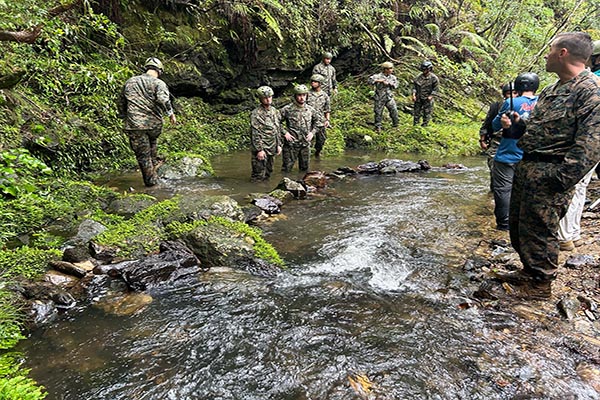
Deploying Renewable Generation Through Small-Scale Hydropower
A field demonstration and ongoing investigation of modular hydrokinetic turbines by the U.S. Army Engineer Research & Development Center’s Construction Engineering Research Laboratory illustrates the potential applicability for using the technology on military deployments. -
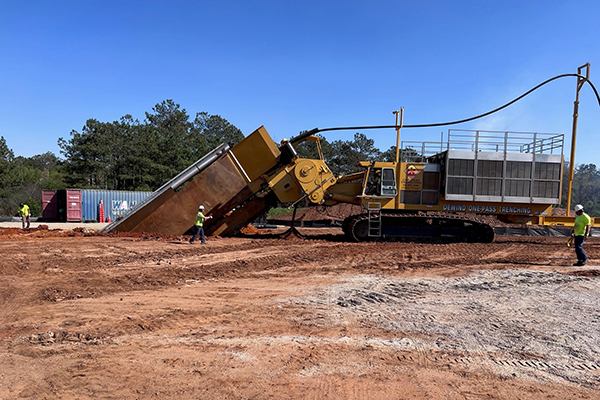
Rethinking Traditional Treatment Systems for PFAS Remediation
At two U.S. Air Force bases impacted by historical releases of aqueous film-forming foam, innovative methods in treating PFAS in both surface water and groundwater provide examples of success in safeguarding health for military personnel and nearby communities. -
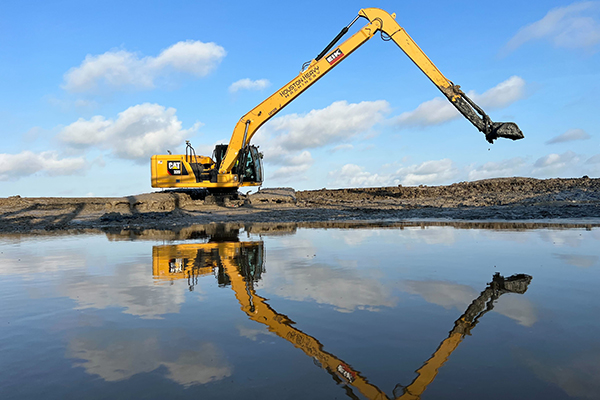
Tackling Restoration Projects With Amphibious Excavators
When faced with soft and wet underfoot conditions, such as at a recent channel dewatering, excavation, and repair project for USACE Galveston District, amphibious excavators offer a scalable way to contour difficult site characteristics. -
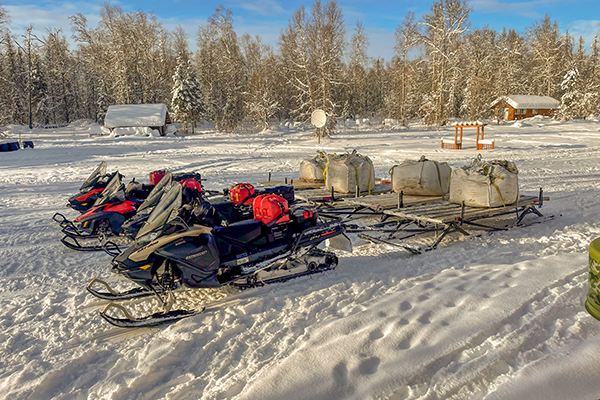
Big Job, Small Solutions: Completing a Complex Remediation in Remote Alaska
At a remote federal remediation site in south-central Alaska, inaccessible by road, barge, or large planes, leveraging the local community and a fleet of snowmobiles and small watercraft allowed for 1,100 bags of contaminated soil to be transported for offsite disposal. -
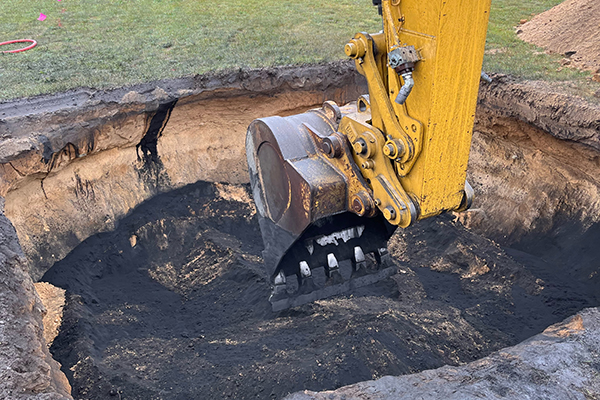
Regenesis Offers Full-Spectrum PFAS Remediation
For project stakeholders and remediation managers confronted with PFAS, Regenesis demonstrates why in situ treatment using Regenesis’ PlumeStop® colloidal activated carbon (CAC) is a game changer. -
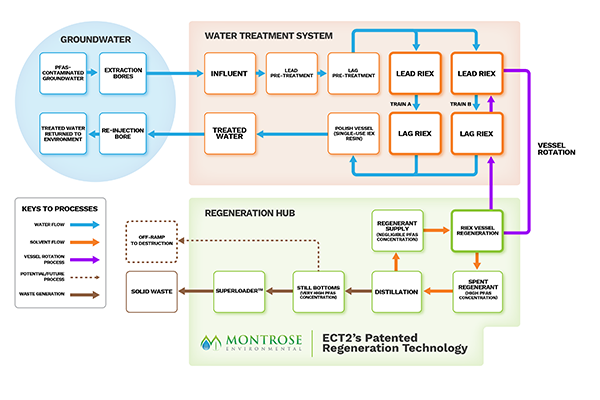
100 Percent PFAS Compliance with Regenerable Ion Exchange Resin
The operational success of a RIEX system spotlights its successful approach to combating PFAS in an effective and economical manner. (Sponsored Content)
